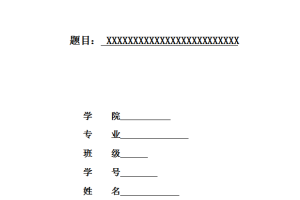摘要
随着科学技术的飞速发展和社会需求的不断变化,现行的会计模式越来越不适应社会经济环境的变化,企业管理模式由纵向一体化发展成为横向一体化,这种基于价值链的横向管理模式,可以使企业在最短的时间里找到最好的合作伙伴,用最低的成本、最快的速度、最好的质量赢得市场。因此,价值链会计在为企业内部提供决策有用的信息的同时,也可以为外部提供相关信息。
本文依据会计是一种价值管理活动的观点,以价值链管理为理念,借助于现代信息技术,改革现行会计模式中旧的不符合实际的部分,使会计管理在时间和空间维度上得到扩展,从而构建能实现事前预测、事中实时控制、事后评价的以价值管理为核心的价值链会计系统框架,为会计理论增加新的血液。
关键词:上市企业;价值链;价值链会计研究; 事项会计法
Abstract
With the continuous change of the rapid development of science and technology and social demand, and current accounting mode can not adapt to the change of the social economic environment, enterprise management mode of development by the vertical integration into the horizontal integration, the management model based on value chain, so that enterprises can in the shortest possible time to find the best partners, quality the lowest cost, the fastest speed, the best to win the market. Therefore, at the same time in the value chain accounting for internal decision-making useful information, can also provide related information for the external.
On the basis of accounting is a kind of value management point of view, based on the value chain management concept, with the help of modern information technology, reforming the current accounting model in the old do not conform to the actual part, make the accounting management has been extended in time and space dimensions, in order to build can realize the forecast in advance, a matter of real-time control, afterwards evaluation of the value management as the core of the value chain accounting system framework, adding new blood to the accounting theory.
Keywords: listed companies; value chain; value chain accounting; accounting method
目 录
摘要………………………………………………………………………………………………………… 1
Abstract……………………………………………………………………………………………………. 1
第一章 前言………………………………………………………………………………………….. 1
1.1研究的实用价值和理论意义………………………………………………………… 1
1.2国内外研究现状综述…………………………………………………………………… 1
1.3拟解决的关键问题………………………………………………………………………. 2
第二章 相关理论概述……………………………………………………………………………. 2
2.1价值链相关理论………………………………………………………………………….. 2
2.1.1价值链的概念……………………………………………………………………. 2
2.1.2价值链的优势……………………………………………………………………. 3
2.2价值链会计相关理论…………………………………………………………………… 4
2.2.1价值链会计的定义…………………………………………………………….. 4
2.2.2价值链会计的特征…………………………………………………………….. 5
第三章 价值链会计体系构建……………………………………………………………….. 6
3.1 价值链会计应用理论构建…………………………………………………………… 6
3.1.1价值链会计假设………………………………………………………………… 7
3.1.2价值链会计确认和计量……………………………………………………… 7
3.1.3价值链会计原则………………………………………………………………… 8
3.2价值链会计核算模式的构建………………………………………………………… 9
3.2.1价值链会计核算体系…………………………………………………………. 9
3.2.2构建价值链会计下的财务业务一体化模型……………………….. 10
第四章 价值链会计的应用前景……………………………………………………………. 11
4.1价值链会计对相关领域的支持…………………………………………………… 11
4.1.1战略管理…………………………………………………………………………. 12
4.1.2人力资源…………………………………………………………………………. 12
4.1.3成本管理…………………………………………………………………………. 13
4.2价值链会计的难点以及前景展望……………………………………………….. 13
4.2.1 价值链会计难题 ……………………………………………………………… 13
4.2.2 价值链会计的前景展望 …………………………………………………… 15
第五章 结论………………………………………………………………………………………… 16
致谢………………………………………………………………………………………………………. 16





